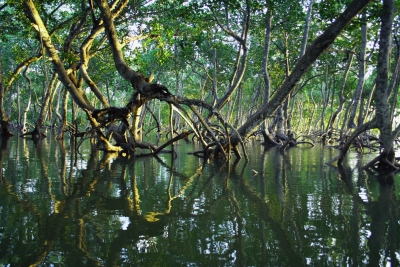
A keystone species is one that has an incredibly important role to play in an ecosystem. Without this species, ecosystem would be dramatically different or may even stop existing altogether. It can be any organism, from large animals to microscopic bacteria. In short, a keystone species is what holds a habitat together.
There’s a call to protect the tiger because as a keystone species, this top predator plays a significant role in the health and diversity of an ecosystem.
If it disappears, the population of its prey – usually ungulates – will go up, and this will result in the decimation of vegetation, leading to a collapse of the ecosystem.
Not just animals, birds and insects, even plants can be keystone species.
Mangroves are a keystone species that firm up shorelines and reduce erosion. They provide a safe haven and feeding area for small fish among their roots, which reach down through the shallow water.
It is true that if bees go extinct, so would humans. This keystone species plays a very important role in keeping the world going.
As the most important pollinators, they are responsible for about a third of the world’s total food production. Without bees, there would be food shortage, and eventual human collapse.
Picture Credit : Google




